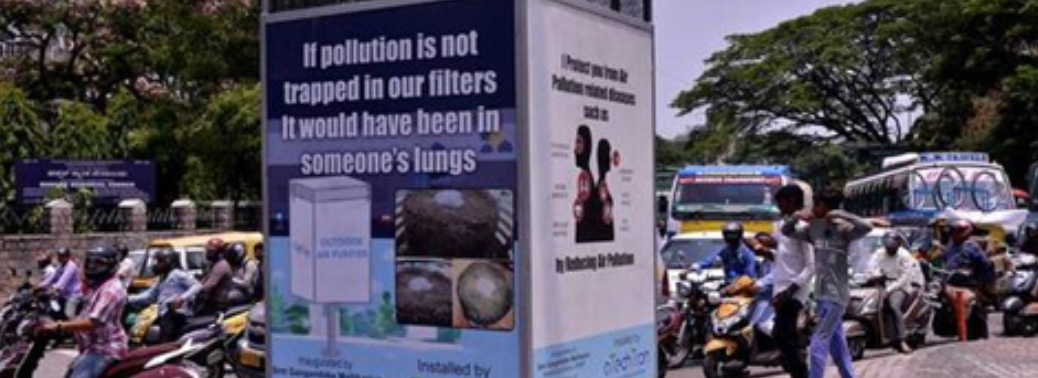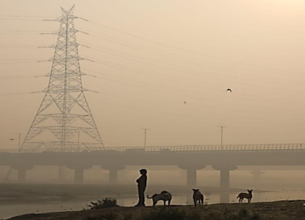CSIR TO CERTIFY AIR QUALITY MONITORING INSTRUMENTS
26, Aug 2019

Prelims level : Environment- Pollution & Waste Management
Mains level : GS-III- Conservation, Environmental Pollution and Degradation, Environmental Impact Assessment.
Context:
- The Union Environment Ministry has tasked the Council of Scientific & Industrial Research (CSIR)National Physical Laboratory (NPL) with certifying air quality monitoring instruments.
Why This Move?
- This is in anticipation of a rising demand by States — against the backdrop of the National Clean Air Campaign — for low cost air quality monitoring instruments that can monitor levels of nitrous oxides, ozone and particulate matter.
- The Centre in January launched a programme to reduce particulate matter (PM) pollution by 20%-30% in at least 102 cities by 2024.
- An edifice of this initiative is to have a vast monitoring network of sensors that can capture the rapid fluctuations of pollutants, necessary to ascertain how these gases and particles affected health.
- Currently, the machines employed by State and Central Pollution Control Boards (SPCB and CPCB) are imported and can cost up to ₹1 crore to install and about ₹50 lakh to maintain over five years.
- Several new sensors, which are far cheaper, are likely in the future, and it would be useful to have a creditable agency that can rate the quality of these devices.
- Still several monitoring units were poorly calibrated, that is, over time, they were susceptible to erroneous readings.
Why Air Quality Monitoring Is Essential?
- The starting point of air quality monitoring is to first study if an area has an air pollution problem.
- Monitoring helps in assessing the level of pollution in relation to the ambient air quality standards.
- Standards are a regulatory measure to set the target for pollution reduction and achieve clean air. Robust monitoring helps to guard against extreme events by alerting people and initiate action.
- We regulate a total of 12 pollutants, including SO2, NO2, PM10, PM2.5 (particulate matter of up to 10 micron and up to 2.5-micron size), ozone, lead, arsenic, nickel, CO, NH3, benzene, and BaP (particulate phase).
- Across cities, only SO2, NO2 and RSPM / PM10 are monitored regularly. Other pollutants, such as PM2.5, O3, CO, BTX, heavy metals are monitored in select cities as capacity is still being built.
- India has set a target for states to meet National Ambient Air Quality Standards (NAAQS) in urban areas by 2017.
How Accurate and Absolute Is the Air Quality Data Reported?
- The present National Air Quality Monitoring Network is limited in scope as the recorded values are indicative and there is immense time lag in reporting the data.
- So real time action is not possible. Also, involvement of various monitoring agencies, personnel and equipment in sampling, chemical analyses and data reporting brings uncertainty and biases.
- But even with the existing system the non-compliance with standards in cities is found to be enormous. As many as 131 cities are exceeding the permissible limit for PM 10 and 18 cities are exceeding the permissible limit for NO2. Therefore, it is the action that matters even as we upgrade our monitoring systems.
Who Carries Out Monitoring in India?
- The ambient air quality in India is monitored collectively by
- CPCB,
- State Pollution Control Boards (SPCBs),
- Pollution Control Committees (PCCs), and
- National Environmental Engineering Research Institute (NEERI) in cities, and covers 215 cities and towns.
- A total of 523 manual monitoring stations are being operated across states. Some states have set up additional monitoring stations in cities.
- However, there is a shortfall in operation as about 1,000 stations with additional continuous ambient air quality monitoring (CAAQM) stations, that report data real time, are required.
- As per 2011 census, 46 cities have million-plus population and in 16 cities CAAQMS have already been installed and commissioned. The CAAQM stations collect the data of 8 pollutants, except metals and BaP.
- Real time monitoring results will help in calculating air quality index to issue health advisories as well as for formulation of action plan to meet standards.
Weakest Links in Air Quality Management:
- Most SPCBs keep their special monitoring and surveillance efforts confined to industrial areas. Very few turn their attention towards the urban air quality of cities.
- As a principle, what matters most is the ability of the authorities to understand the profile of a city’s air pollution sources and their emissions rates and trends; cities also must go beyond routine monitoring to generate specialised data. Unfortunately, Indian cities do not score on these counts.
About CSIR:
- The CSIR was established by the Government of India in September of 1942 as an autonomous body that has emerged as the largest research and development organisation in India.
- Although it is mainly funded by the Ministry of Science and Technology, it operates as an autonomous body through the Societies Registration Act, 1860.
- The research and development activities of CSIR include aerospace engineering, structural engineering, ocean sciences, life sciences, metallurgy, chemicals, mining, food, petroleum, leather, and environmental science.
CSIR NPL:
- The CSIR-NPL, situated in New Delhi, is the measurement standards laboratory of India.
- It maintains standards of SI units in India and calibrates the national standards of weights and measures.
- Each modernized country, including India has a National Metrological Institute (NMI), which maintains the standards of measurements. This responsibility has been given to the NPL.
- The NPL maintains standard units of measurement such as Metre, Kg, Seconds, Ampere, Kelvin, Candela, Mole and Radiation.







